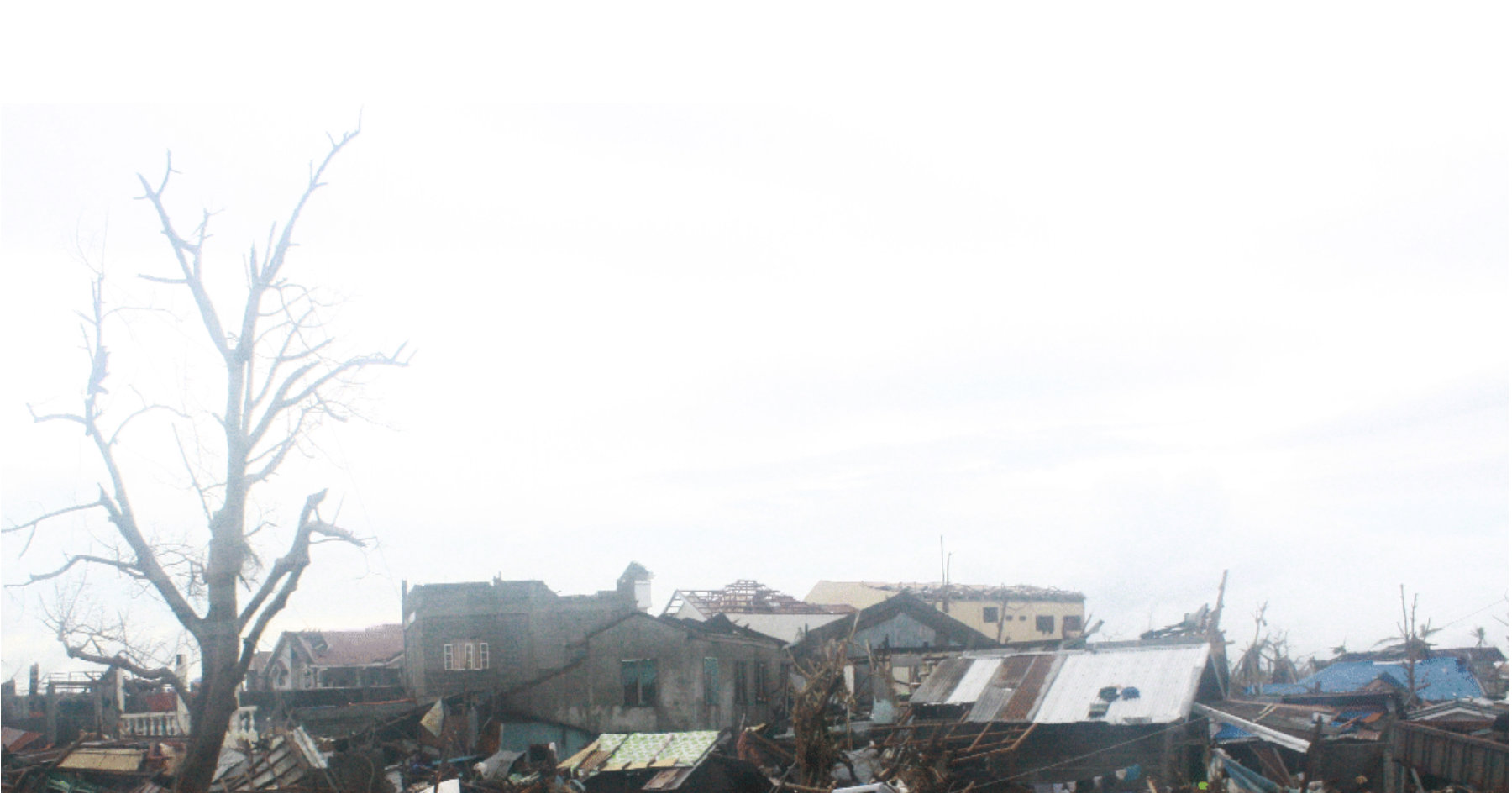I went back home the day before super typhoon Yolanda struck. I’m from Jaro, Leyte but my family decided to stay with my grandmother in Tacloban City because we thought it would be safer there. When I arrived home, everything was in place and everyone was relaxed. We were not bothered about the news in the TV or from text messages from our friends and relatives. November 7, Thursday, was bright and sunny; who would have thought the typhoon would be strong after all?
But we were wrong. Early in the morning of November 8, strong winds started to blow. Only minutes had passed, but we could already feel the wrath of Yolanda. Very strong winds followed by heavy rains. At the peak of the typhoon, water began to enter our house at heel high. When a second wave came, we were knee deep in water. It was getting worse. The third wave followed and the water inside our house was waist high. We panicked!
It was zero visibility outside and the floodwater went up to chest high. A strong current carried me away from my family and led me to a two-storey house. The door was already damaged and gave me entry to the house where water was ravaging inside. I summoned my strength to go upstairs to save myself from drowning but the way to the second floor was blocked. The water was rising, and in my desperation to survive, I shouted at the dwellers of the house, “Kun diri ak niyo pasudlon, bantay kamo ha akon kun may mahinabo ha akon” (If you won’t let me in, prepare yourselves if something bad will happen to me).
At my insistence, the family let me upstairs. I stayed in the corner of the room, chilling, and scared. I fell asleep. I woke up late in the afternoon, the super typhoon and the flood had abated. The family was no longer there with me; I was left alone. I went downstairs and went out of the house. Outside was a landscape of bloated dead bodies. Some were floating in big water puddles, others hanging in electric posts. The city itself seemed mined from below the ground rendering everything to rubble. The sight was unbearable.
My stomach grumbled as I wandered around the mined city. I was very hungry. I saw a big house and knocked on its door. They gave me two packs of biscuits. I thanked them and continued walking. In the streets, I saw a half-filled bottled water and picked it up. I wanted to go home but everything was topsy-turvy and almost unrecognizable; I can barely tell where I was. I was very lost.
I tried to find for more food, but many of the survivors needed it too. So I decided to save the biscuits and water that were left until I found my way home I kept on wandering the streets in the city. Dead bodies were scattered all over and the smell was awful. It was already dark and I have nowhere to go to. I slept beside the dead bodies piled in the streets of Tacloban downtown. For three days, I wandered starving, lost and hopeless. News about Yolanda survivors looking like zombies was not an exaggeration. Smelly, dirty and tattered clothes and infected wounds all over the bodies are common things you’ll observe on a Yolanda survivor. It was horrible.
I saw lootings but was never tempted to do the same. I even saw bundles of money spilled out of a vault, but I didn’t bother to take even just a handful. All I could think of at that time was my family. What is money for without my family and without anything to buy with? I assumed they were dead and I was losing hope.
On the fourth day after the typhoon’s landfall, I found my way home. All the members of my family were alive. They were half in shock and half in joy at the sight of me. They thought I was dead. They even had a portrait of me on an altar and a lighted candle. We hugged and cried so much. I approached the altar and blew the candle out. It was like my second birthday.
This is the story of Rachel Sangrana, 16. Her story is just one of the thousand other accounts of hardships and grief, as well as of hope and inspirations that no other natural calamity has brought.
Almost a year has passed after that deluge. Rachel’s family is back in Jaro, Leyte. Their house was totally damaged by Yolanda, but it is being renovated slowly. She said they are starting to live the way they did before the typhoon. She was thankful and felt blessed that her family withstood the tragedy that killed thousands of people. She is now in her second year student taking up Bachelor in Secondary Education at the Visayas State University.
Some may say that Yolanda is now a figment of Leyte’s history, and that Leyteños need to move forward. But for Rachel, Yolanda is part of the world’s history which shaped not only the lives of Leyteños but of the world’s.
Rachel’s story are those kinds that we keep in our hearts with hopes that our lives may someday get better.


